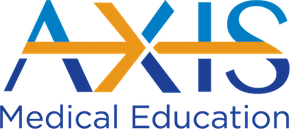Cardiology Digital Tools Help Model Clinical Decision-Making

01/26/2024
The Department of Internal Medicine Grand Rounds, “Modeling Clinical Decision-Making with Digital Tools in Cardiology,” was presented on January 11, 2024 by Jiun-Ruey Hu, MD, MPH, clinical fellow (cardiovascular medicine).
During his talk, Hu emphasized that many aspects of clinical decision-making can be modeled computationally. Hu provided an overview of the interactive digital tools he and his team are developing to enhance decision-making and medical education in cardiovascular medicine.
“Guidelines exist in every specialty and model the current standard of thinking, but they are generally hundreds of pages long each,” Hu said. “These guidelines are just waiting to be transformed into point-of-care tools for decision-making and medical education.”
For example, selecting the appropriate type of stress test is crucial so patients are not exposed to unnecessary radiation, procedural risk, or financial costs. While many specialty societies have developed appropriate use criteria, they have seen limited uptake by busy clinicians.
Members of the Computational Cardiology team developed Stressing Wisely, an interactive, scenario-based tool that provides instantaneous feedback to clinicians about the appropriateness of the stress test they plan to order and whether better imaging alternatives are available.
Hu said clinical decision support mechanisms (CDSMs) for imaging ordering currently available through electronic medical records (EMRs) are optimized for hospital profits, not patient care. “Current CDSM systems make no effort to change the mind of the ordering physician about the appropriateness of the test being ordered, nor do they suggest alternative tests are more appropriate,” Hu said. “In contrast, in our reverse approach, Stressing Wisely provides appropriateness ratings for a range of imaging and non-imaging cardiac tests, including the option of no test, so that the ordering physician can make an informed, guideline-supported decision about the right test to pursue for the patient.”
Throughout the talk, Hu highlighted the collaborative nature of the Computational Cardiology team, which reflects the work of 61 faculty, fellows, residents, and medical students. The team is working on other digital tools for specific clinical scenarios, such as determining the optimal strategy for screening for cardiotoxicities of therapy in patients with cancer, determining the optimal choice of non-statin therapies in patients with high cholesterol, or determining which guideline-directed medical therapy could be started in patients with heart failure and concomitant kidney disease.
They also aim to integrate these computational tools into systems clinicians already use, including clinical pathways and EMRs, to automatically pull in some patient data and fit more seamlessly into a physician’s workflow.
During his presentation, Hu invited attendees to think about how computational tools could be used in their work and how they can be translated into international or low-resource settings. He is also assisting faculty members in other specialties who want to apply this approach in their field.
In closing, Hu was clear that the role of the physician is not going away. “We want the clinician using this tool to make their conclusion. We are not there seeing the patient, and so we want them to be the one who ultimately makes the call.”
For more information on Hu’s work, Yale faculty and staff can view a video of the event on the intranet.
The Department of Internal Medicine at Yale is among the nation's premier departments, bringing together an elite cadre of clinicians, investigators, educators, and staff in one of the world's top medical schools. To learn more, visit Internal Medicine.
